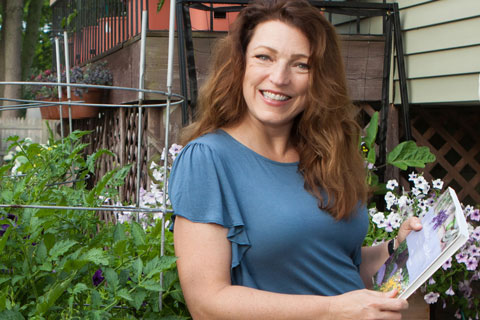1/1/2019
Message Amplification in the Age of Omnichannel
Katie Elzer-Peters

Consumer attention is ever more fragmented. Buyers are pulled between varying communication channels and methods—in a single evening, taking in content via their phones (email, social media, apps, videos), televisions (increasingly through on-demand services rather than network or cable), and desktop (laptop) computers and game consoles. Within social media channels alone, in a span of 10 minutes a consumer can hop from Instagram to Facebook to Twitter to Tumblr to Pinterest and back, pausing in between to Google something on the phone’s web browser.
How on earth do you stand out in that cacophony?
In part two of this series, Clint Albin, chief communications officer of Bower & Branch, summed up how to stand out, saying, “The crux of omnichannel communication is reducing communications gaps and friction.”
You can do this by being crystal clear about who your audience is, what they want and then have someone they want to listen to deliver the message via a medium they will consume. It isn’t enough to broadcast the same message to everyone and hope something sticks.
Finding your Audience
You can identify your audience via two loose designations:
1. Their generation
2. Their interests
Both the broad characteristics of a generation and the micro-obsessions of the interest groups shape the way your customers will interact with you. (Hear the message?)
Generations
There are four main generations shopping in garden centers today and they each have different philosophies depending on the social and economic conditions present at pivotal parts of their lives. (Of course, you can’t paint an entire generation with broad brush strokes and expect to be accurate, but the reality is that the physical abilities and economic status, including disposable income, and attitudes toward both are different between generations. So are tastes and interests.)
• Baby Boomers (Current ages: 54-72)
• Gen X (Current ages: 39-53)
• Millennial (Current ages: 23-38)
• Gen Z (Current ages: 22 and younger)
Baby Boomers have been gardening for 20, 30 or 40 years. Many are experiencing physical limitations while retaining their love of plants. Retailers can keep this demographic engaged by amplifying the message that there’s technology, there are tools and there are services provided by the retailer that can help. Many garden centers will help with plant selection, loading, planting, landscape maintenance and more.
Gen X is the DIY generation that made house flipping a phenomenon. If they don’t like what they see on offer at a local store, they’ll find a way to get it themselves. They’re not waiting for Boomers to retire; they’re starting their own companies.
Everyone is talking about Millennials, also known as the Instagram generation—if it isn’t photograph-worthy, it doesn’t exist. Look around your garden center. Is it ready for Instagram? Instead of brushing off this tendency to document and share, see it for what it is: the way one generation interacts with their environment. If you don’t provide a way for them to do that, they’ll simply ignore you.
Generation Z is the fully online generation that’s more into experiences and less into “stuff,” unless the stuff helps them have a better experience. They’re also more likely to shop in retail stores than Millennials and Gen X. Gardening is a perfect blend of experiences and items, but it’s up to retailers to make sure that Gen Z knows that.
Interests
In November 2018, The New York Times ran a widely-circulated article called “Meet the Plantfluencers: In a world of climate change, creating a biome of one’s own.” Author Penelope Green talked to nearly a dozen individuals between 20 and 40 years old who have started houseplant businesses, from brick-and-mortar stores to mobile plant nurseries (akin to food trucks) to subscription services and online stores.
In the theme of “everything old is new again,” houseplants, a mainstay of ’70s decor, are huge again, with a hip facelift and streamlined sales communication.
Here’s what the “plantfluencers” have in common: they found their audience and then they amplified their message in a way that their audience was receptive to. Eliza Bank, creator of The Sill, said to Penelope, “We all have dreams of the big house in the country, but right now we’re living in a basement on the Lower East Side and how do we connect to nature there? I think my generation just wants to be happy.”
Do you really know what matters to your customers? How they want you to help them enjoy gardening experiences? If not, it’s time to ask so that you can craft a communications strategy that works.
Influencers
The word “influencer” is inescapable in communications (hence, The New York Times article.) The work that influencers do in amplifying brand messages (whether paid or unpaid, compensated or uncompensated) is vital.
Tom Lyons writes in a November 2018 MediaPost article, “The ability for micro-influencers to effectively tell a believable story is essential for brands that want to generate revenue while creating brand loyalty.” He classifies micro-influencers as individuals with “followings under 500,000, [that] post content that is interesting, relevant, and most importantly, on brand.”
Micro-in fluencers are the new celebrity endorsement. Instead of a commercial where a movie star tells you to open a credit card, you watch the local gardening expert tell you when to plant your tomatoes and which new tomato cultivars to buy—via Instagram, not the television. Or via email not postal mail.
fluencers are the new celebrity endorsement. Instead of a commercial where a movie star tells you to open a credit card, you watch the local gardening expert tell you when to plant your tomatoes and which new tomato cultivars to buy—via Instagram, not the television. Or via email not postal mail.
For influencers to amplify your message, you need to partner with people your audiences know, like and trust. Aim a blend of instructional and aspirational content to amplify your key messages. Some influencers do both, while others skew one way or the other—focusing a lot on how-to messages or inspiring a movement toward, say, houseplant mania!
Pictured: As an example, Bower & Branch is working with influencer Shawna Coronado during her 2019 Wellness Tour.
Finding Partners to Amplify your Message
First, look at your staff. Who’s good at social media or written communications? Who do your customers flock to for advice? Some amplification can happen with staff. Maybe your general manager or customer service manager is a great communicator and beloved by your customers.
Second, you can also look locally for non-staff influencers. Who do your customers follow on Instagram? What do they read? Engage these people from various age and interest groups to amplify your message (forward, share and repost your communications).
Finally, and the one with the biggest payback, piggyback on national influencers as well by sharing their content on your platforms to feed your audience with information and inspiration they might not otherwise have seen. They’ll connect your shares with you and you’ll get the benefit without the cost of development.
You used to be able to convert a lead to a customer with seven touch points; now it takes around 29. That’s a lot of messaging. Instead of going it alone with your communications strategy, partner up for bigger results.
Steps to Amplify the Message
There’s no longer a “one-size-fits-all” strategy for marketing and communication. (Marketing is communication now—a dialog, not a one-way street.)
1. Identify your target audiences.
2. Find out what matters to each audience and use it to craft your message.
3. Amplify the message to each audience via messenger, channels and methods they’ll respond to. GP